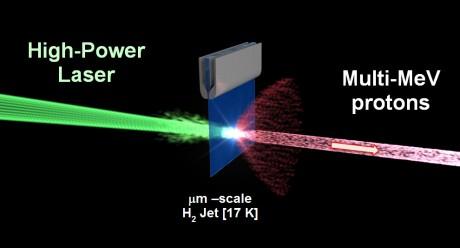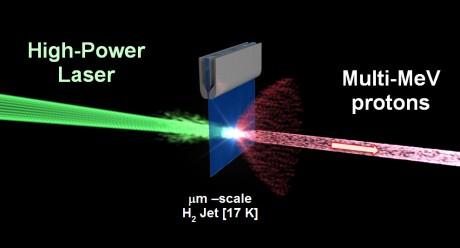Monoenergetic Proton Beams
DOE funding for cryogenics has shown a new path towards high-energy protons
SLAC HED experiments are aimed to produce novel high-energy proton beams from the interaction of high-intensity short-pulse lasers with cryogenic hydrogen. Our goal is to demonstrate the highest acceleration efficiencies known to date and to deliver particle beams suitable for applications.

Similar to x-rays, energetic proton beams penetrate through tissue but deposit most of their energy only in a small localized area deep inside the human body. Thus, protons are extremely well suited to destroy cancer cells. Our experiments utilize a novel continuously flowing cryogenic micro-jet that was recently developed at Stanford. Thus, the project is in the unique position to achieve simultaneously all the requirements on energy, charge, purity, beam emittance and repetition rate that up to now have been elusive to this field. Existing particle-in-cell simulations show that liquid hydrogen will become transparent during the interaction with the laser, enhancing the sheet electric fields and resulting in nearly mono-energetic proton beams of energies of 60 MeV. Experimentally demonstrating these proton beams predicted by the simulations would be a very important achievement, and a demonstration of new accelerator physics. Furthermore these beams could become suitable for injection and will consequently motivate new studies of hybrid accelerators that have tremendous potential to deliver the urgently needed 230 MeV + regime for applications in proton radiography, imaging and tumor therapies.

